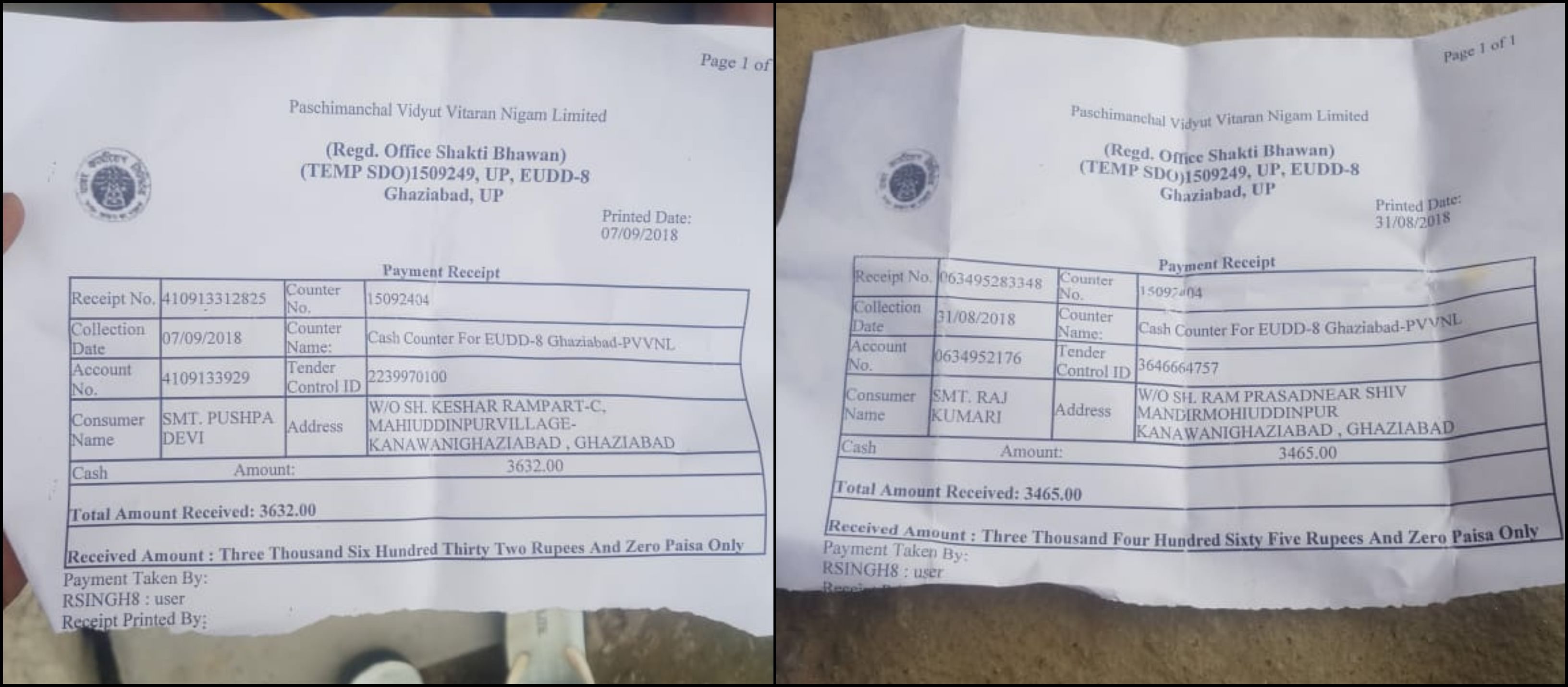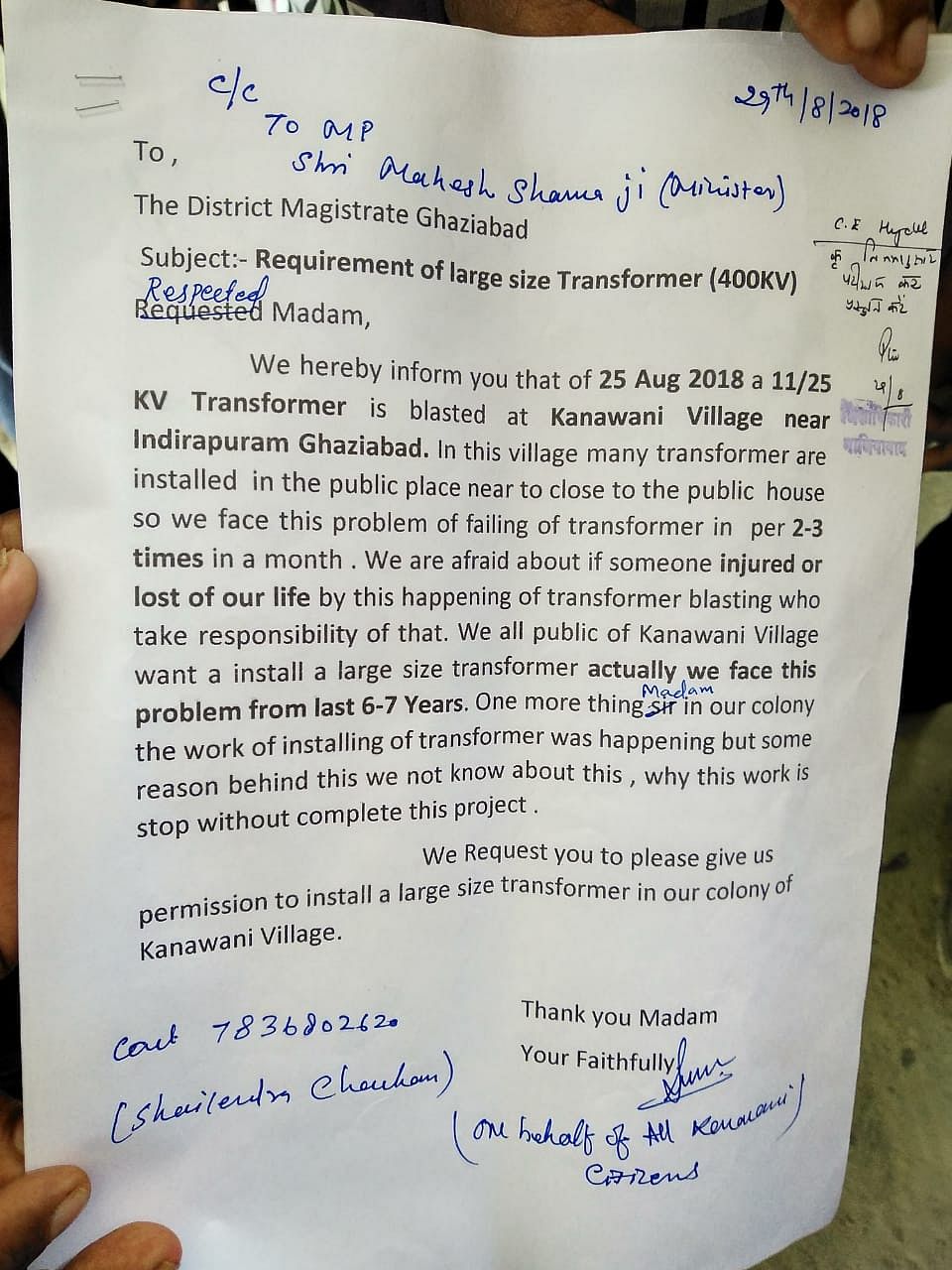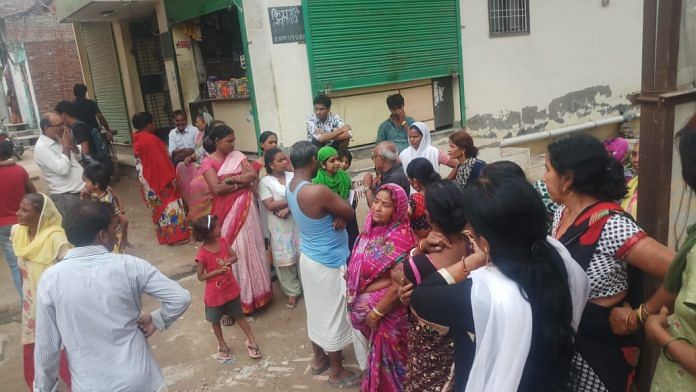The residents of Kanawani, who have been living in darkness since 25 August, say the transformers in their village keep blowing up because of excessive load.
New Delhi: A village on the outskirts of Ghaziabad’s bustling Indirapuram township has not had electricity or water since its transformers went bust 18 days ago. But when electricity officials arrived Tuesday to replace them, the villagers sent them away.
So goes the saga of Kanawani, a settlement of nearly 2,500 people on the Hindon floodplain, where residents are now shelling out money to charge their phones in neighbouring areas and reportedly paying up to twice the going rate for water.
Also read: For 600 Pakistani Hindus in Delhi, life is battling mosquitoes & lack of electricity
The village lost power on 25 August, following a short-circuit in one of its three 15 KV transformers. The ensuing explosion left an adjacent building damaged. The other two transformers could not handle the increased load, and soon the entire village went dark.
According to an electricity department official, a single household that runs one fan and light can ideally be sustained by a one kilovolt (KV) transformer.
Residents say the village sees at least two to three short-circuits a month as the transformers are ill-equipped to handle their needs. It doesn’t help that the hand-pumps installed by the government don’t work, leaving the population dependent on electric motors, which further increases the power demand.
Local residents have repeatedly sought a transformer with a 400 KV capacity, but electricity officials have ruled it out on account of Kanawani’s location on the floodplain.
Junior engineer Rajesh Kumar of the Uttar Pradesh Power Corporation, who led the team that arrived to replace the transformers, said their hands were tied by a court order.
“There have been strict orders from the court that flooded areas can’t have bigger transformers. If they want to bend the law and have it their way, they may,” he said.
The electricity department team managed to install one transformer Tuesday, but even that had a short-circuit at night.
“There is no point of replacing the transformers,” said a resident when asked about the boycott. “They will fuse again in two days. They need to understand that we need the bigger transformer.”
Struggling for water
Amid the standoff, life has become a daily struggle for Kanawani’s residents. Unable to run their motors in the absence of electricity, they reportedly have to buy water for Rs 20 per bucket, with local shopkeepers selling bottled water at inflated prices too.
“The Bisleri bottle that you get for Rs 10 is being sold at Rs 25,” Neha Dubey, a resident of Kanawani for six years, told ThePrint.
Locals from adjacent settlements have been charging phones of Kanawani residents for Rs 10. At one of the shops, villagers can be seen queuing up to charge their equipment.
Meanwhile, a primary school in Kanawani, Modern School, is tapping a small power solar panel to keep students cool for an hour or two daily.
The land on which Kanawani stands belonged to farmers before it was sold to private dealers in 2003, local resident Mukesh Kumar told ThePrint.
Kumar bought a plot here in 2006, which is also when the transformers were first set up, and built a house by 2008.
“At the time, we got an adequate amount of electricity from the government,” Kumar said, adding, “But as the population increased, the demand for electricity also shot up.”
Fear of injury and death
Although the colony is unauthorised, the villagers say they pay the electricity bill every month.

Much like unauthorised colonies around Delhi, the transformers here are installed close to homes, which imperils residents every time there is a fuse.
“The transformers have fused so many times in the past,” said Umesh Jha, who works in a Gurgaon-based private firm. “Naked electric wires run loose everywhere, and people end up injuring themselves when they come into contact with them.”
“Five people have died over the past two years because of this,” Jha said.
In 2017, the Modi government promised the villagers a 400 KV transformer as the Centre rolled out the Integrated Power Development Scheme (IPDS), which aims at 24×7 power supply in urban areas.
“The installation of the 400 KV transformer was proposed by the central government under the IPDS scheme, but then the UP government declared Kanawani a flood area,” said S.K. Pandey, a senior engineer at the Uttar Pradesh Power Corporation. “So we had to roll back the transformers.”
Also read: Dry & diseased North Gujarat loses out on Modi visit as South gets Rs 586-cr water scheme
However, a school in the same area has two such heavy transformers. When ThePrint asked Pandey how they got permission for the installation, he said, “There must have been a lag in communication. By the time the orders came from the state government, the transformers must have already been installed under the scheme.”
In a letter dated 29 August to the Ghaziabad district magistrate, the residents reiterated their demand for a 400 KV transformer.
“We are afraid, if someone gets injured or we lose our life in these transformer blasts, who will take responsibility?” they wrote.

“We have been running back and forth to get the big transformer in place to end this situation once and for all,” said Jha, “The action department (of the electricity board) has been telling us that there is government pressure from above and they can’t install it anymore.”







Shekhar ji, your friend Jumlebaj Modi was shouting from roof top that entire India is electrified. Please ask him to clarify. He is your good friend. As you know Jumlebaj never clarify things and believes in only and only JUMLEBAJI.